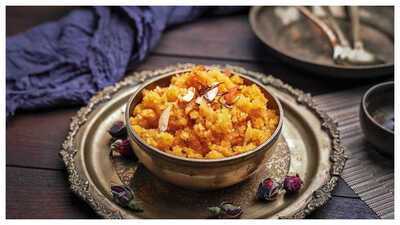Written by: Yasaswi Kochar

Like every new year celebrated in India, Navroz (August 15) is incomplete without traditional sweets . Restaurateur Rushad Ginwala tells us, “I prefer traditional versions. I am not against enriching traditional recipes, but I don’t like too many twists. However, dietary needs can be kept in mind for vegans or those who prefer less sugar.” There are various options which can replace sugar in these traditional desserts. Says chef Aman Tandon, “Every traditional Parsi dessert has a unique flavour profile and texture, making them a delightful experience. To make it more appealing to the individuals who are health-conscious, sugar can be replaced with date and palm jaggery, organic honey, forms of sucrose or natural sugar or anjeer paste.”
Desi sweets with a Parsi twist:
Gulab jamun with a Parsi twist: Stuff gulab jamuns with sweet lentil filling, just like in dar ni pori. The filling, a mix of lentils, jaggery, and Parsi spices, is cooked to a thick consistency. The result is a decadent sweet with a classic soft, syrupy exterior and a nutty, spiced centre
Malpua made with ravo and served with mithoo dahi: The Parsi-inspired malpuas are made with rava and infused with cardamom and nutmeg, and served warm with a dollop of mithoo dahi instead of the traditional rabdi
– Inputs by Chef Jay Kasawlekar

Modern twists to traditional sweets:
Mawa ni boi cheesecake: A two-tiered filling, bottom layer is a fudge-like base made from mawa, with nuts and cardamom. The top layer is a classic baked cheesecake infused with rose water and nutmeg. The crust is made from crushed nankhatai cookies and is finished with a caramelised sugar crust, like crème brûlée. Garnish with chandi varq.
Matcha and rose falooda: A layered dessert built on a creamy, cardamom-spiced milk base that blends the earthy notes of matcha with a rich texture. A classic rose syrup provides a sweet, fragrant foundation and colour, while soft vermicelli and gelatinous sabja seeds add the falooda textures.
“Vessels and methods do make a huge difference, the best example is lagan nu custard. Traditionally, it is cooked in trays over coal. The taste of caramelised sugars and smokiness is tough to reproduce in commercial ovens,” says Tiraz Commessariat, owner of a Parsi eatery.
Like every new year celebrated in India, Navroz (August 15) is incomplete without traditional sweets . Restaurateur Rushad Ginwala tells us, “I prefer traditional versions. I am not against enriching traditional recipes, but I don’t like too many twists. However, dietary needs can be kept in mind for vegans or those who prefer less sugar.” There are various options which can replace sugar in these traditional desserts. Says chef Aman Tandon, “Every traditional Parsi dessert has a unique flavour profile and texture, making them a delightful experience. To make it more appealing to the individuals who are health-conscious, sugar can be replaced with date and palm jaggery, organic honey, forms of sucrose or natural sugar or anjeer paste.”
Desi sweets with a Parsi twist:
Gulab jamun with a Parsi twist: Stuff gulab jamuns with sweet lentil filling, just like in dar ni pori. The filling, a mix of lentils, jaggery, and Parsi spices, is cooked to a thick consistency. The result is a decadent sweet with a classic soft, syrupy exterior and a nutty, spiced centre
Malpua made with ravo and served with mithoo dahi: The Parsi-inspired malpuas are made with rava and infused with cardamom and nutmeg, and served warm with a dollop of mithoo dahi instead of the traditional rabdi
– Inputs by Chef Jay Kasawlekar

Modern twists to traditional sweets:
Mawa ni boi cheesecake: A two-tiered filling, bottom layer is a fudge-like base made from mawa, with nuts and cardamom. The top layer is a classic baked cheesecake infused with rose water and nutmeg. The crust is made from crushed nankhatai cookies and is finished with a caramelised sugar crust, like crème brûlée. Garnish with chandi varq.
Matcha and rose falooda: A layered dessert built on a creamy, cardamom-spiced milk base that blends the earthy notes of matcha with a rich texture. A classic rose syrup provides a sweet, fragrant foundation and colour, while soft vermicelli and gelatinous sabja seeds add the falooda textures.
“Vessels and methods do make a huge difference, the best example is lagan nu custard. Traditionally, it is cooked in trays over coal. The taste of caramelised sugars and smokiness is tough to reproduce in commercial ovens,” says Tiraz Commessariat, owner of a Parsi eatery.
You may also like

Love Island's Blu Chegini says he's 'not a women hater' as he teases All Stars return

Trump LIVE: Trump humiliated as Putin keeps him waiting

Peter Andre forced to climb through window to rescue trapped son

Emmerdale's Ross Barton star makes huge change for ahead of first child

Nigel Farage and top Tories slammed in huge row over 'two-tier' justice system






